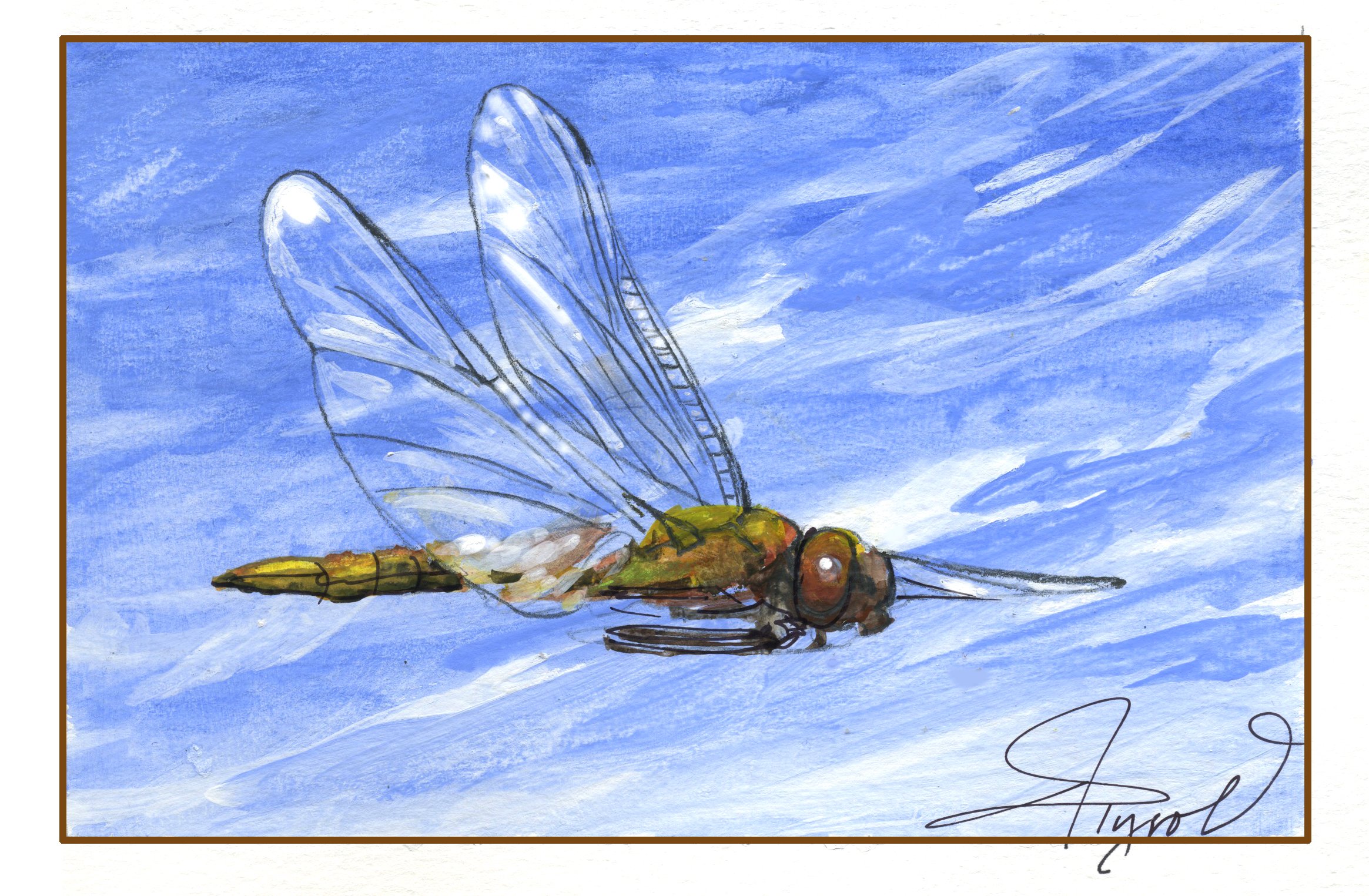Did you know some dragonflies migrate?
October 9, 2024 | By Pamela Hunt | The Outside StoryThe great annual movements of fall include monarch butterflies winging toward Mexico, whales heading to the Caribbean to give birth, and multitudes of birds in the autumn skies.
There’s another migration this season that often goes unnoticed by casual observers: that of dragonflies. Given that dragonflies (or something closely resembling them) have been on this planet for more than 300 million years, there’s even a chance they’re the original migratory animals!
We’ll never know of course, but it’s likely that the ancient climate in which they evolved was warmer and seasonal movements weren’t as necessary. At some point, however, migration did evolve in dragonflies, and there are now a dozen or so species known to undertake seasonal movements in North America. These are most obvious in fall when large numbers of dragonflies are sometimes concentrated along coasts or ridgelines. Under the right conditions, thousands may pass by a location in a single day.
The most familiar migratory dragonfly in our region is the common green darner (Anax junius), often joined by other migratory dragonflies such as the wandering glider (Pantala flavescens).
The common green darner is about 3 inches long and named for its lime-green thorax. More notable is the bright blue abdomen of the males (in females this is pinkish-brown). These are usually the first dragonflies to appear in the Northeast in spring, often in April, and the last to leave in fall, typically by mid-October. And like monarch butterflies, the north- and south-bound individuals are from different generations.
One of the first attempts to study the fall movements of common green darners involved attaching tiny radio transmitters to dragonflies in New Jersey in 2005 and attempting to track their movements from a small airplane (being high in the air makes it easier to pick up the radio signals). Researchers found that most dragonflies stopped to rest for a couple of days as migrating birds do, and the maximum single-day flight was just under 100 miles – not bad for an insect weighing a little over a gram.
The darners we see moving south in the fall are heading to the Gulf of Mexico or beyond, where they will mate, lay eggs, and die. A second generation emerges in these more southern climes in late fall and gives rise to a non-migratory cohort that spends winter there. The offspring of this sedentary group move north in the spring, arriving in our region in April or May. This third generation mates and lays eggs, which will hatch and become adults in the Northeast and begin their southward migration as summer wanes again. Migratory green darners may travel up to 2,000 miles.
The distances covered by another migratory species are even more impressive. The wandering glider (appropriately called the “globe skimmer” in other parts of the world) has been recorded on every continent except Antarctica, and even on isolated islands in the Pacific Ocean.
Unlike the darner, this species has relatively broad wings that allow it to move more efficiently with wind, and it uses this to its advantage when migrating. Wandering gliders are slightly smaller than common green darners, with golden bodies and red eyes. Most studies on this species’ migration have been done in Africa and Asia, so we know little about its life cycle in North America. What we do know is that individual wandering gliders may travel up to 6,000 miles in their lifetimes, with some making non-stop flights of 3,000 miles from Africa to India.
Only a handful of New England’s 120 dragonfly species migrate, while the others overwinter as nymphs. So if you catch a glimpse of a dragonfly that seems like it’s on a mission this fall, take a closer look. Is it a common green darner headed south to launch the next generation? A wandering glider on an epic migratory journey to South America? Or perhaps it’s another migrant – a black saddlebags, Carolina saddlebags, or twelve-spotted skimmer.
Whatever the species, wish them luck as they travel south into the next stage of their lives.
Pamela Hunt is the senior biologist for avian conservation for New Hampshire Audubon. The Outside Story is assigned and edited by Northern Woodlands magazine and sponsored by the Wellborn Ecology Fund of New Hampshire Charitable Foundation.

